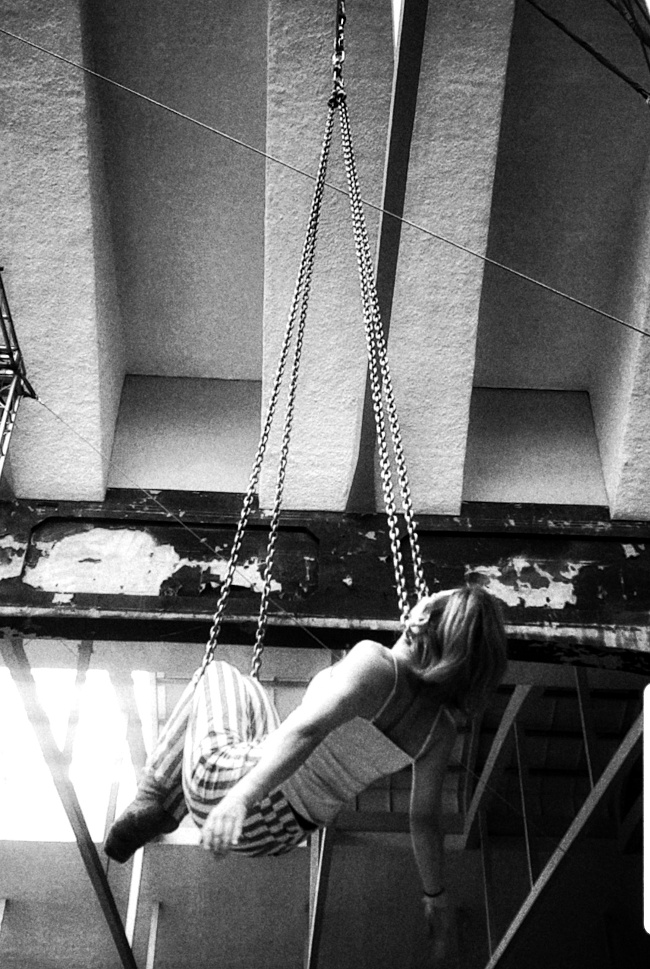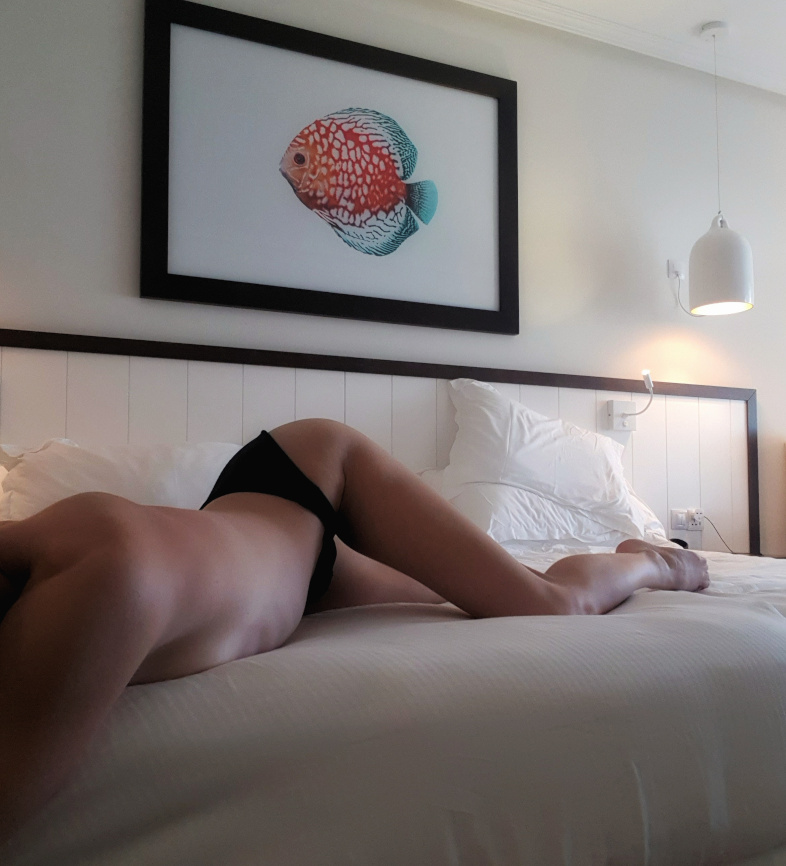The first time I touched the chains the pain was unbearable. We’d been warned – wear layers, my mentor had told me. And boots. Putting shoes on to do aerial felt weird, topsy turvy. But when I touched the chains I understood. I had expected them to hurt, but was still surprised by how even trying to hold them was hard. They were cold, unyielding, uneven. Bit into my hands as I tried to grip. I kept shifting and changing where I held, but it made absolutely no difference, which was when I realised that there was no trick to this, no way to make it easier: this was going to hurt.
When we were offered the chance to try this unusual and particularly unpleasant piece of apparatus, I was quietly confident that my ability to endure pain would carry me through, make me more able to tolerate the pinch and bite of cold metal. I was wrong. I found them almost too much to bear – getting up on to them was a nightmare, trying to hold on to them to invert and do tricks upside down was awful. They dug into the soft bits of my body and bruised me, rubbed painfully against wherever they found bone. I was glad when, after two excruciating and frustrating hours, we finally got to stop.
Still, there was something there. The sheer awful brutality of the chains intrigued me. Here was a thing that didn’t just require skill and strength, but the ability to endure the unendurable. On my first day at circus school, one of my coaches described circus as “the impossible and the unnecessary” – and to me, the chains seemed like both. So when we were asked what piece of kit we would like to use for our solo act development, I said that I would like to work on the chains, please.
In the first few weeks of creating that chains act I have never regretted a decision more. The pain didn’t seem to get easier. I accrued bruises which made repeating the same movements even more painful. Rigging them was a nightmare – two giant loops of heavy commercial chain, literally the kind of chain you might find in a shipyard or construction site – the weight of them would leave me half-buckled and out of breath as I dragged them over to the rig. There, I had to lift them up into the air. Even on a pulley system which reduced the weight by a third it was hard work, and I would have to do this multiple times a day. I would sit and stare balefully at my chains, unable to face the pain of pressing my bruised hips into them again, as my peers worked productively on their more sensible, friendly apparatuses.
Slowly, it got easier. My legs were of a mess of dalmation spotted bruises where the individual chain links would pinch skin, and my shins were often bloody from where the skin got scraped off, but movement on them felt freer and I was less scared of the pain. It still hurt, but my nerves had stopped sending panicked screaming signals to my brain about the damage they interpreted was happening to my body. By not giving up, by forcing myself back up and on to the chains even when it hurt so much I would sometimes gasp and have to quickly flip myself off them – I was taming them. And it felt amazing.
It wasn’t all plain sailing. I caught my finger in between links one day which resulted in mild nerve damage, and numbness for a month afterwards. One day when jumping off the chains I forgot to duck and they swung back and hit me in the face – I was lucky not to lose teeth. For the most part I learned to take the pain with me, but other days it took me over: I would drag them out, rig them up, touch them once and then lie on the floor almost in tears with frustration because I knew I couldn’t bear the pain. Those bad days made me doubt myself, doubt my ability to spend six whole minutes twirling gracefully amongst the chains, showing no sign of pain, no reaction when they pinched and bit and mauled me.
My captivation with the masochistic, painful element of being a chains performer would end up influencing the act I created. The first time I ever touched them I was wearing more clothes than I’d ever worn to do aerial before, and when I eventually performed on the chains it was with as much bare skin as possible. I was obsessed with the dichotomy of flesh and metal, of dancing with something so fraught with harm. I loved how challenging people found it watching bruises form in real-time on my body, the gasps as I did a dynamic drop from the top of the chains, the loops catching me at the bottom with a dramatic and intimidating series of clangs and crashes. I had people ask me afterwards what they were made of, looking for the trick, the manipulation behind the magic. Chains, I would say, nonplussed. They’re made of chains.
I don’t train on chains any more. I don’t have access to any right now, and apart from their shock value and incredible aesthetic, they are not the most practical or versatile piece of kit. I found whilst putting together my chains act that I could replicate the same movements on two strops instead – basically two loops of fabric rigged in the exact same way. Finding moves and playing on the strops was infinitely easier, because I didn’t have to weigh up each movement in terms of how much damage it was going to do to me, or whether that was a pain that I could bear. But whilst useful as a way to rehearse without further bruising my body, the strops lacked all of the things that made the chains so interesting – the implication of peril, the noise, the look, the feel. They yielded to me without a fight. With the chains, I had to work. It was a battle, relentlessly painful and therefore incredibly rewarding when I was finally able to master the complex art of balancing that pain inside me and doing so with a smile.
I’ve always said that to be involved in circus in general and aerial in particular you need to have some sort of interesting relationship with pain, but nothing has exemplified that for me as much as my own personal journey taming the chains – collecting bruises, and falling in love.




